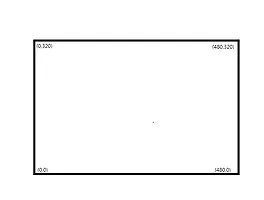기본적으로 생성된 파일의 소스는 아래와 같습니다.
역시 책에서 보였던 소스와는 약간은 틀립니다.
레퍼런스 사이트를 나중에 천천히 봐야할 듯 하네요.
http://www.cocos2d-x.org/reference/native-cpp/V3.5/index.html
#include "HelloWorldScene.h"
#include "SimpleAudioEngine.h" //버전 3.5에서부터 추가된 기능인것 같습니다.
USING_NS_CC;
Scene* HelloWorld::createScene()
{
// 'scene' is an autorelease object
auto scene = Scene::create();
// 'layer' is an autorelease object
auto layer = HelloWorld::create();
// add layer as a child to scene
scene->addChild(layer);
// return the scene
return scene;
}
// on "init" you need to initialize your instance
bool HelloWorld::init()
{
//////////////////////////////
// 1. super init first
if ( !Layer::init() )
{
return false;
}
auto visibleSize = Director::getInstance()->getVisibleSize();
Vec2 origin = Director::getInstance()->getVisibleOrigin();
/////////////////////////////
// 2. add a menu item with "X" image, which is clicked to quit the program
// you may modify it.
// add a "close" icon to exit the progress. it's an autorelease object
auto closeItem = MenuItemImage::create(
"CloseNormal.png",
"CloseSelected.png",
CC_CALLBACK_1(HelloWorld::menuCloseCallback, this));
closeItem->setPosition(Vec2(origin.x + visibleSize.width - closeItem->getContentSize().width/2 ,
origin.y + closeItem->getContentSize().height/2));
// create menu, it's an autorelease object
auto menu = Menu::create(closeItem, NULL);
menu->setPosition(Vec2::ZERO);
this->addChild(menu, 1);
/////////////////////////////
// 3. add your codes below...
// add a label shows "Hello World"
// create and initialize a label
auto label = Label::createWithTTF("Hello World", "fonts/Marker Felt.ttf", 24);
// position the label on the center of the screen
label->setPosition(Vec2(origin.x + visibleSize.width/2,
origin.y + visibleSize.height - label->getContentSize().height));
// add the label as a child to this layer
this->addChild(label, 1);
// add "HelloWorld" splash screen"
auto sprite = Sprite::create("HelloWorld.png");
// position the sprite on the center of the screen
sprite->setPosition(Vec2(visibleSize.width/2 + origin.x, visibleSize.height/2 + origin.y));
// add the sprite as a child to this layer
this->addChild(sprite, 0);
return true;
}
void HelloWorld::menuCloseCallback(Ref* pSender)
{
//Close the cocos2d-x game scene and quit the application
Director::getInstance()->end();
#if (CC_TARGET_PLATFORM == CC_PLATFORM_IOS)
exit(0);
#endif
/*To navigate back to native iOS screen(if present) without quitting the application ,do not use Director::getInstance()->end() and exit(0) as given above,instead trigger a custom event created in RootViewController.mm as below*/
//EventCustom customEndEvent("game_scene_close_event");
//_eventDispatcher->dispatchEvent(&customEndEvent);
}
위에 소스를 기본 실습을 위해 정리해 보도록 하겠습니다.
#include "HelloWorldScene.h"
#include "SimpleAudioEngine.h" //책에는 빠져있지만 넣어 보도록 합니다.
Scene* HelloWorld::createScene()
{
// 'scene' is an autorelease object
auto scene = Scene::create();
// 'layer' is an autorelease object
auto layer = HelloWorld::create();
// add layer as a child to scene
scene->addChild(layer);
// return the scene
return scene;
}
// on "init" you need to initialize your instance
bool HelloWorld::init()
{
//////////////////////////////
// 1. super init first
if ( !Layer::init() )
{
return false;
}
return true;
}
나머지 부분들은 과감하게 삭제를 해보도록 합니다.
변경된 소스는 이렇습니다.
auto scene = Scene::create()
createScene() 메소드는 Scene을 생성합니다.
auto layer = HelloWorld::crate();
scene->addChild(layer);
그런다음 Layer 클래스를 상속받은 HelloWorld 클래스를 생성한
다음 먼저 생성한 scene 에 HelloWorld 클래스를 addChild()로 포함합니다.
return scene;
마지막으로 생성한 scene를 반환하는 코드입니다.
다른 화면에서 화면 전환을 하기 위해 createscene() 메소드를 호출할 경우
새로운 Scene이 생성될 뿐만 아니라 레이어도 생성한 후 addChild()로 포함해서 반환하기 때문에
해당 클래스에서 구현한 내용으로 새로운 화면이 구성되는 것입니다.
bool HelloWorld::init()
createScene()에서 레이어를 생성할 때 자동으로 호출되는 메소드입니다.
머 일단은 무슨 이야기 인지는 잘 이해가 되지 않지만 그냥 넘어가도록 합니다.
'cocos2d' 카테고리의 다른 글
| 8.cocos2d 좌표계와 앵커 포인트 (1) | 2016.08.02 |
|---|---|
| 7.기본 화면 사이즈의 변경, 로그제거 , 리소스 삭제 (0) | 2016.08.01 |
| 5.실습용 기본형 프로젝트 생성 (0) | 2016.07.31 |
| 4.프로젝트 생성 및 파일 실행 (1) | 2016.07.31 |
| 3.개발환경 만들기2 파이썬 설치하기 (0) | 2016.07.31 |

